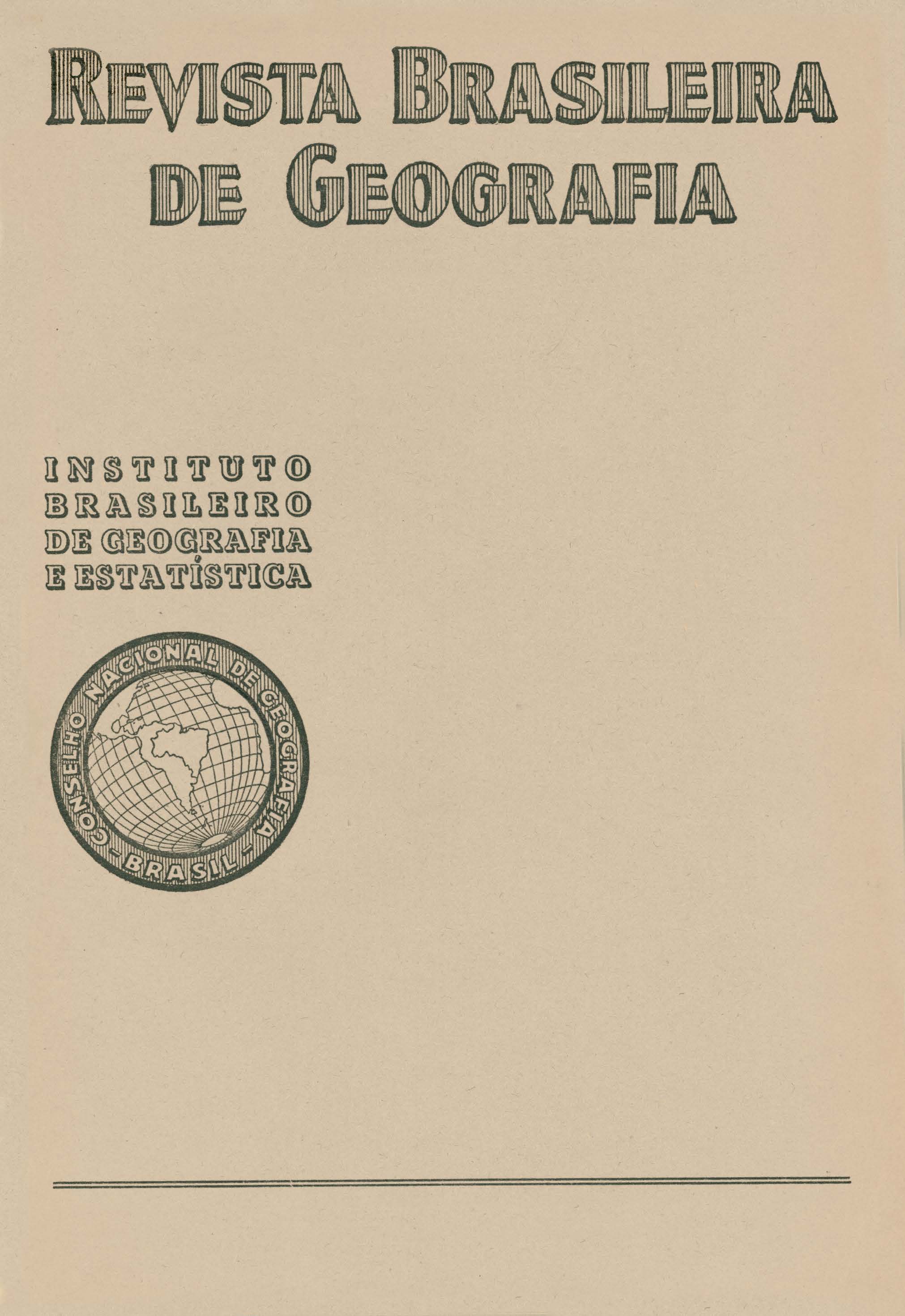De Goiás a Cuiabá através do Chapadão Mato-grossense
Palavras-chave:
Goiás;, Matogrosso;, Cuiabá;, Geografia Física;Resumo
The author describes the geology physiography along the way between the ancient capital of Goiás and Cuiabá. He deals with one of the most sparsely inhabited regions of the country about which there are only abridged geological studies.
The trip was made at about 16 degress South Latitude, crossing the large plateau of the state of Mato Grosso at more than 500 kilometers (311 miles) from the Araguaia River to the sharp declination at the edge of the large marsh. The plateau is considered by the author to be a well-defined geographic entity and corresponds also to a geologic entity. It is a Devonian plateau containing locally some very recent formations. Leaving the old city of Goiás, the writer traversed small table-lands covered with outcroppings of mineral ore and large areas of fine Loose pieces of mineral rock almost as fine as dust, creating a very monotonous topography. On those extensive plains are frequent small lakes bordered by dense green plant life contrasting with the somber aspect of the forest which dominates the area. The land reaches to the banks of the Araguaia is very thinly settled with (that) poor farms. The Araguaia River is 400 meters (1,312 feet) wide at the crossing point and has high banks and a shallow bed dotted with little islands o f gneiss.
Heading eastward the trip is made through woods intermingled by flat open country, cultivated fields and marshes, very similar in appearance to the land that was observed before reaching the Araguaia. Only gneiss and mica shist are present as the terrain increases in elevation culminating in the Fogaça mountain range, which reveal a change in the geomorphological character o f the land form.
Across other mountain ranges that continue forming precipices and piles of large rock, the author climbed up to the high plateau, the rim of which runs very close to the course of the Garça River. Traveling across the high plateau he encountered an area of red sandstone in small rolling table-lands and later found himself on the large plateau with extensive small table-lands many miles in area and all of an entirely identical aspect. After a lengthy journey trough terrain of that appearance, he reached the division of the waters of the Araguaia and the Mortes. There suddenly appears here, the Paredão mountain range, 80 to 100 meters (262.5 to 328 feet) above sea level. The range rises abruptly from the plateau and continues montonously above a surface of grey leaf-shaped clayey rocks from the Devonian era. There then appears the Mesozoic rocks, thinly coated by the Devonian age, and there are also noticeable nidications of more frequent human occupation. From the Mortes River to the escarpments of the Ranchão, the large table-land maintains its heighth. At the cliffs of the Ranchão, the high plateau ends, and one gets a beautiful panorama of the large marsh that lies 400 meters (1,312 feet) below.
The author finishes by making observations about the manner of exploiting this immense region, completely uninhabited and unproductive.






